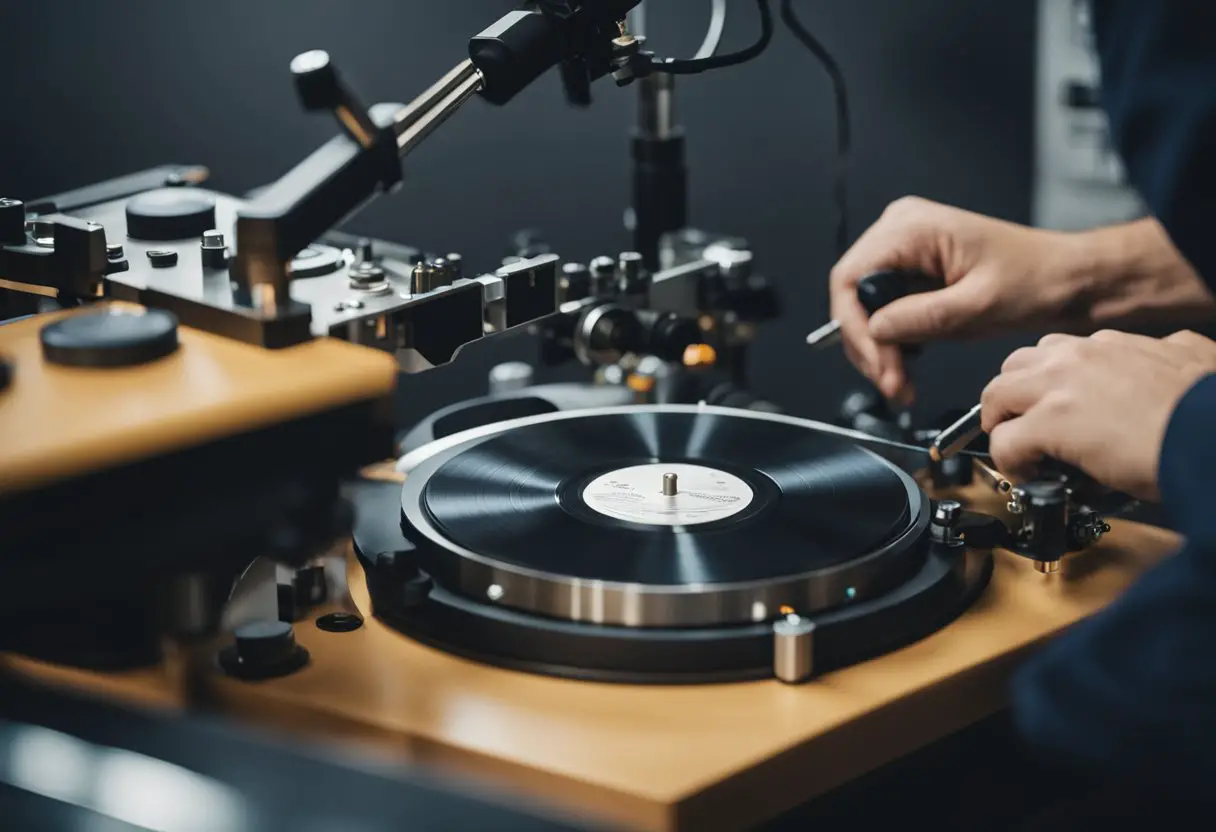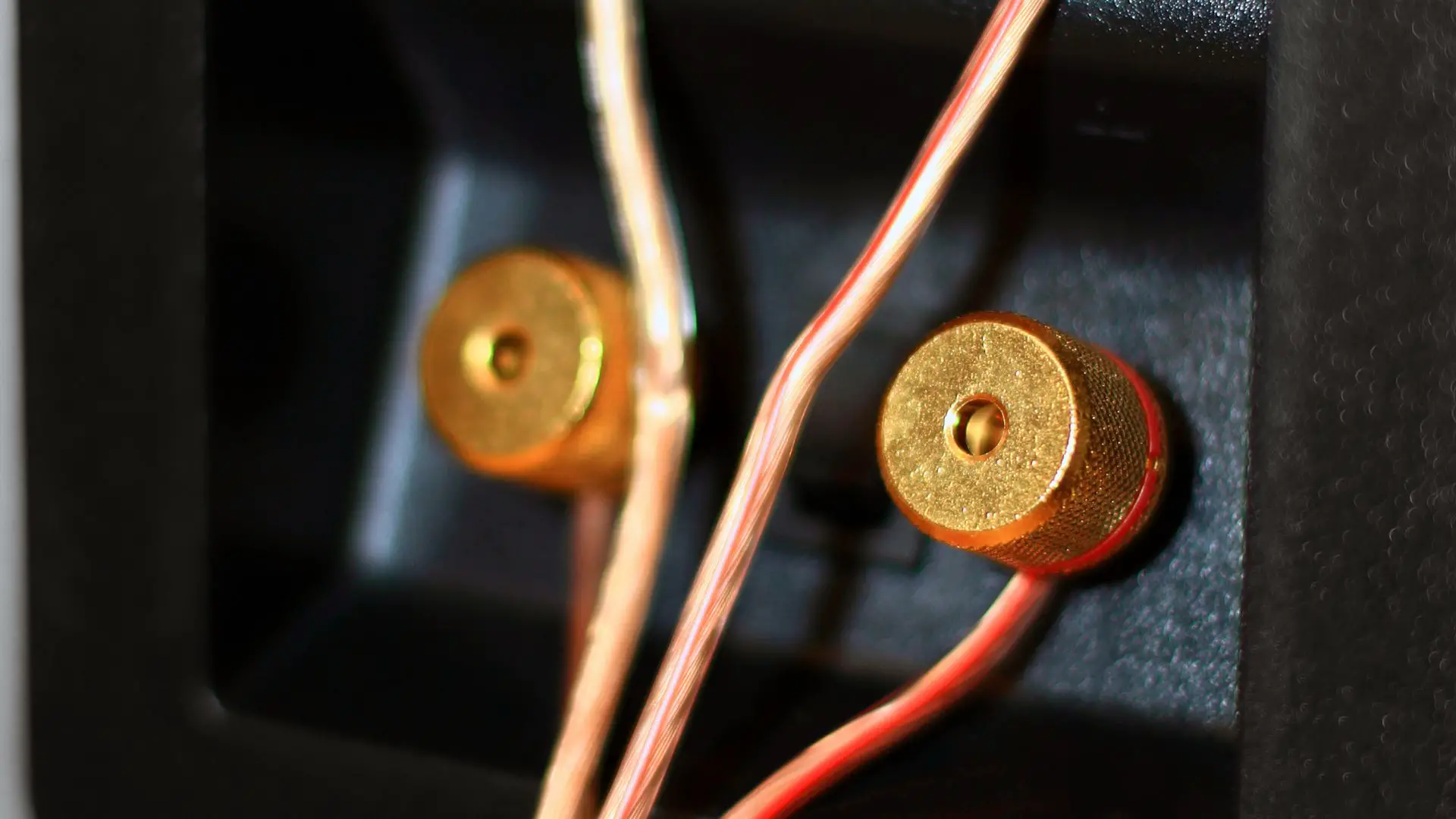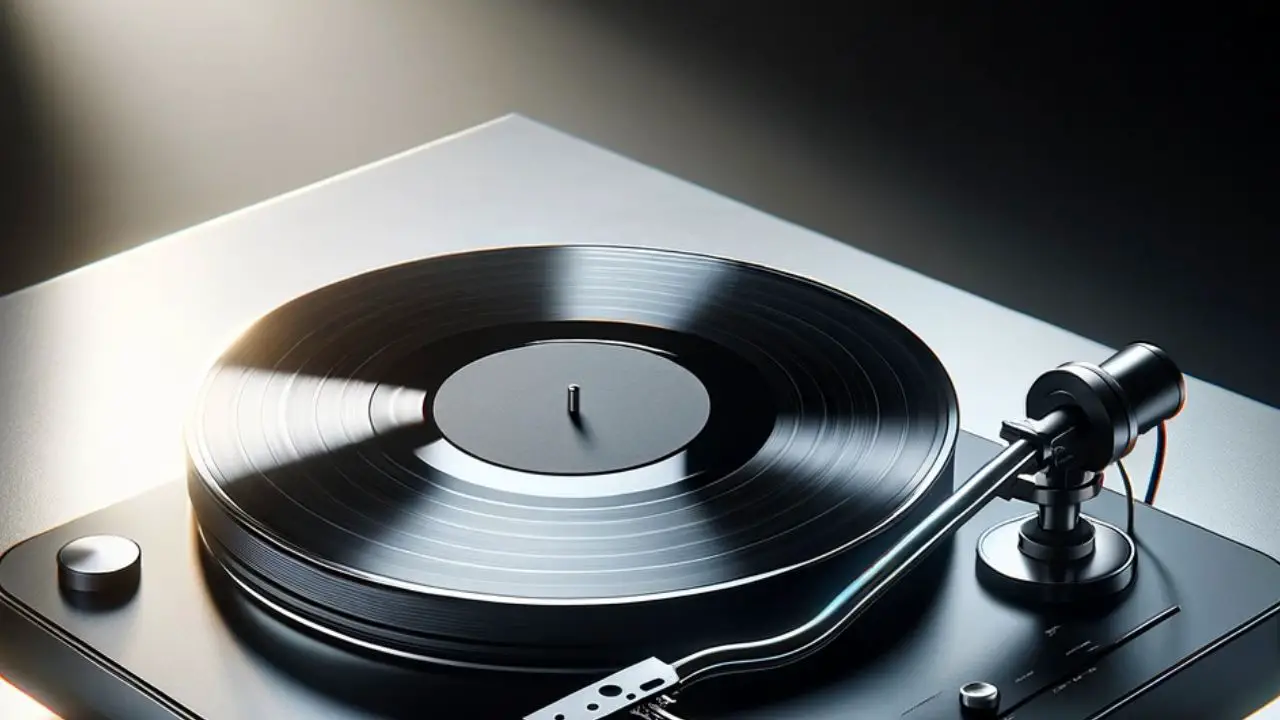If you are a music lover and enjoy listening to vinyl records, you may have considered upgrading or modifying your turntable to enhance your listening experience. Turntable upgrades and modifications can range from simple tweaks to major overhauls, and can significantly improve the performance of your turntable.
One of the most popular turntable upgrades is the cartridge. The cartridge is the component that houses the stylus and is responsible for reading the grooves on the record. Upgrading to a higher quality cartridge can result in a significant improvement in sound quality.
Another popular upgrade is the phono preamp, which amplifies the signal from the cartridge and prepares it for playback through your speakers. Upgrading to a higher quality phono preamp can result in a cleaner, more detailed sound.
Beyond these basic upgrades, there are many other modifications and tweaks that can be made to your turntable. Upgrading the platter, tonearm, and motor can all have a noticeable impact on sound quality.
Additionally, simple tweaks like upgrading the turntable mat or adding vibration isolation can also make a difference. With so many options available, it’s important to do your research and determine which upgrades and modifications will best suit your needs and budget.
Table of Contents
Turntable Upgrade Options
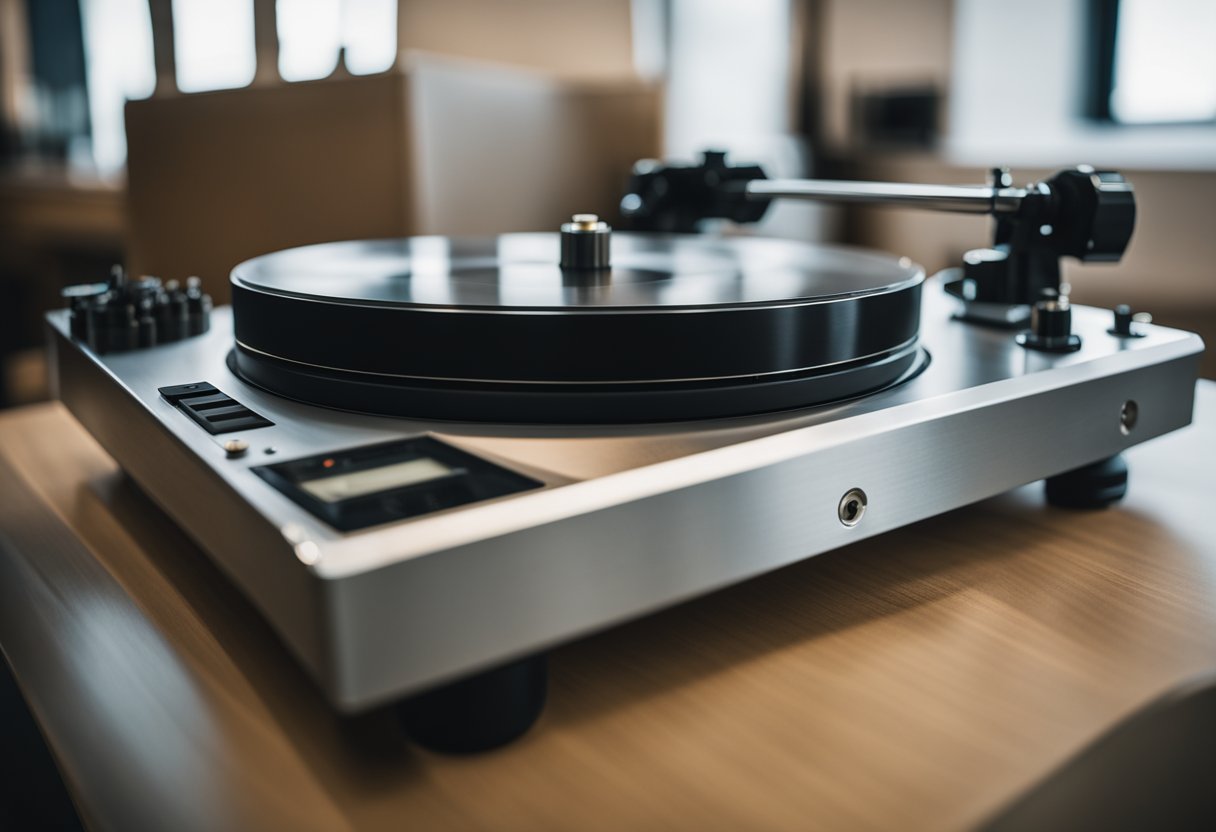
There are several types of turntable upgrades that you can consider, depending on your budget and preferences. Here are some of the most common types of turntable upgrades:
Cartridge Upgrade
The cartridge is the component that houses the stylus and translates the grooves on the record into an electrical signal. Upgrading your cartridge can make a significant difference in the sound quality of your turntable. There are several types of cartridges to choose from, including moving magnet (MM) and moving coil (MC) cartridges. MM cartridges are generally more affordable and easier to install, while MC cartridges are more expensive but offer better sound quality.
Tonearm Upgrade
The tonearm is the component that holds the cartridge and moves across the record. Upgrading your tonearm can improve the tracking ability, reduce distortion, and enhance the overall sound quality of your turntable. There are several types of tonearms to choose from, including straight, S-shaped, and J-shaped tonearms.
Phono Preamp Upgrade
The phono preamp is the component that amplifies the electrical signal from the cartridge and prepares it for the amplifier. Upgrading your phono preamp can improve the sound quality of your turntable by reducing noise and distortion. There are several types of phono preamps to choose from, including external and internal phono preamps. External phono preamps are generally more expensive but offer better sound quality and more features.
Platter Upgrade
The platter is the component that the record sits on and spins. Upgrading your platter can improve the stability and accuracy of the rotation, which can reduce distortion and improve the sound quality of your turntable. There are several types of platters to choose from, including acrylic, glass, and metal platters.
Belt Upgrade
The belt is the component that connects the motor to the platter and spins the record. Upgrading your belt can improve the accuracy and stability of the rotation, which can reduce distortion and improve the sound quality of your turntable. There are several types of belts to choose from, including rubber, silicone, and leather belts.
Record Mat Upgrade
The record mat is the component that sits on top of the platter and supports the record. Upgrading your record mat can improve the stability and accuracy of the rotation, which can reduce distortion and improve the sound quality of your turntable. There are several types of record mats to choose from, including cork, felt, and rubber mats.
Cartridge Upgrades
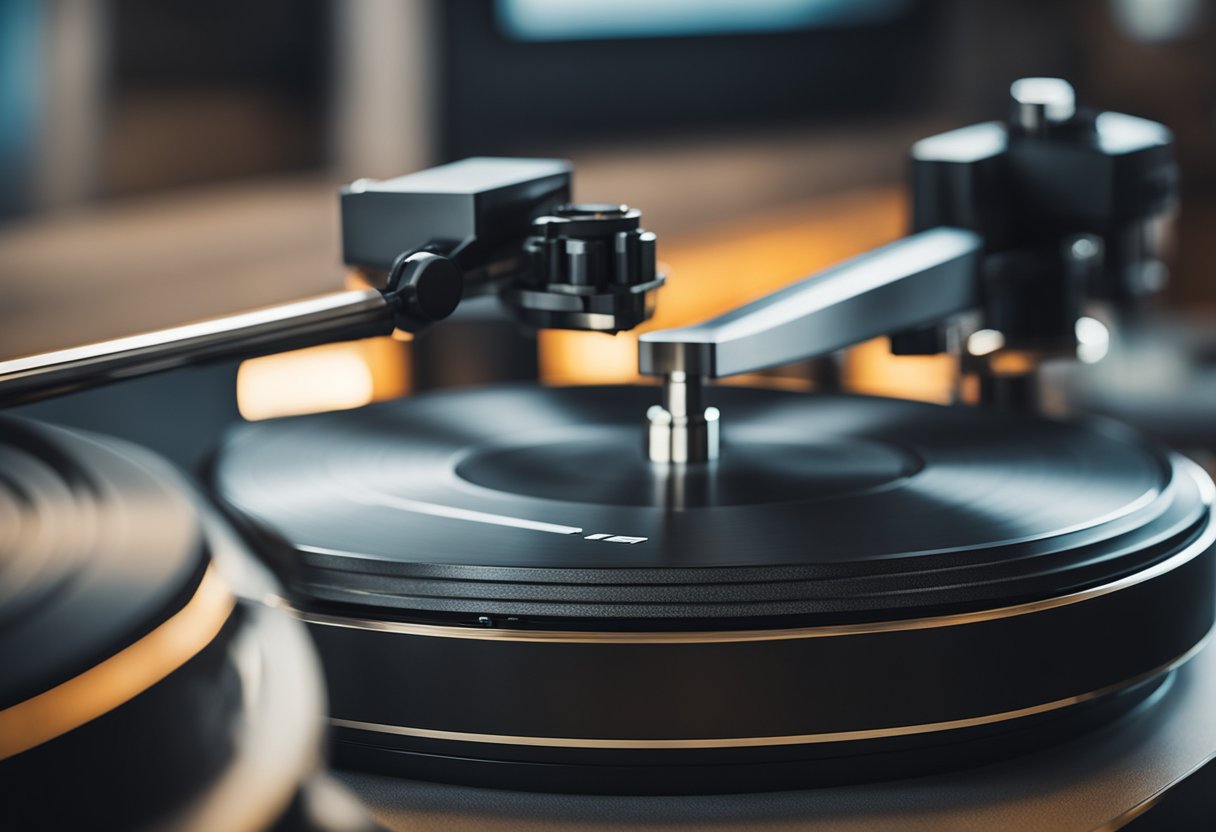
If you’re looking to upgrade your turntable, the cartridge is one of the first things you should consider. Upgrading the cartridge can lead to a significant improvement in sound quality. Here are a few things to consider when upgrading your turntable cartridge.
Moving Magnet vs Moving Coil
There are two types of cartridges: moving magnet (MM) and moving coil (MC). MM cartridges are more common and less expensive than MC cartridges. They also tend to be easier to install and maintain. MC cartridges, on the other hand, are more expensive and require a phono preamp that can handle their low output. They tend to offer better sound quality than MM cartridges, but the difference may not be noticeable to everyone.
Stylus Upgrades
Another way to upgrade your turntable is to upgrade the stylus. The stylus is the needle that sits in the groove of the record and reads the sound. There are different types of stylus shapes, such as conical, elliptical, and Shibata. Each shape has its own benefits and drawbacks. Conical styluses are the most common and the least expensive. They have a wider contact area with the groove, which can lead to more surface noise. Elliptical styluses have a smaller contact area with the groove, which can lead to less surface noise and better tracking. Shibata styluses have an even smaller contact area with the groove and are known for their high-fidelity sound.
When upgrading your turntable cartridge, it’s important to choose a cartridge that is compatible with your turntable. Some turntables have a fixed cartridge, while others allow you to swap out cartridges. If you’re not sure which cartridge is best for your turntable, consult the manufacturer’s specifications or consult with a professional.
Tonearm Modifications
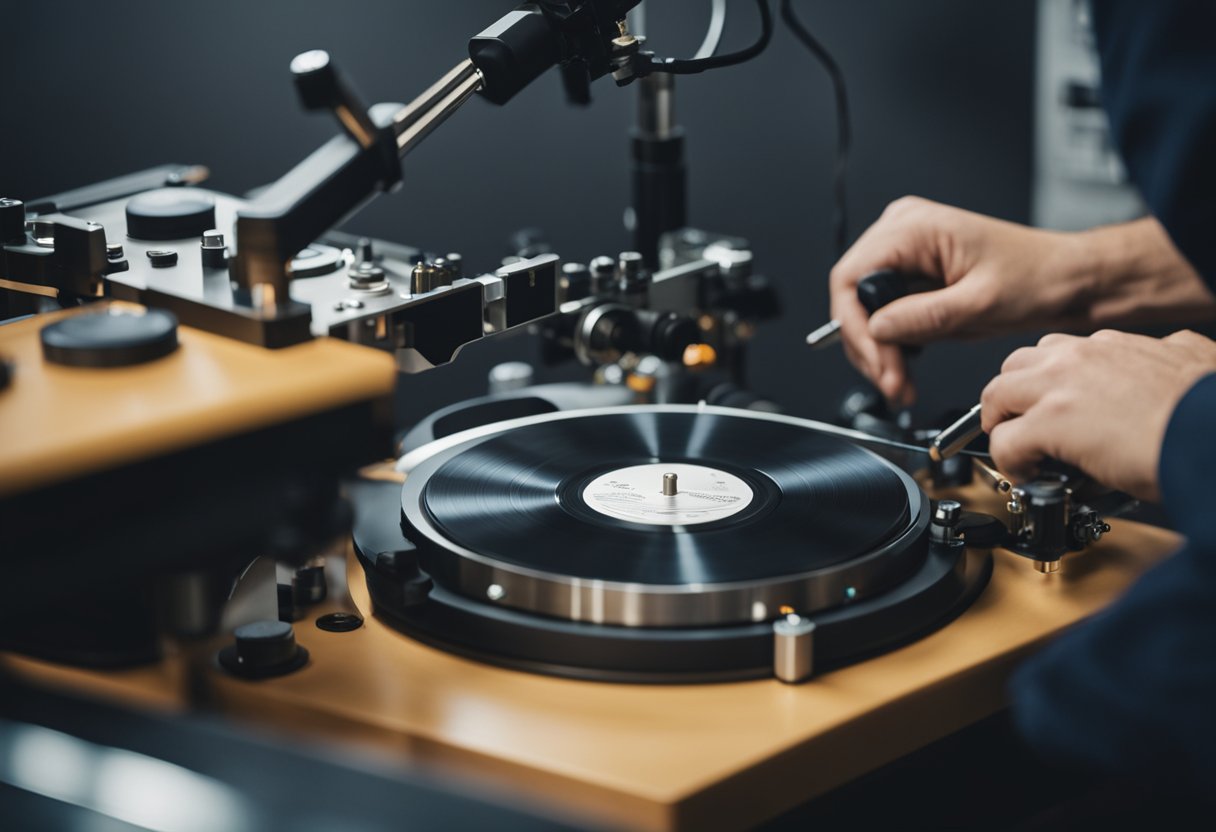
One of the most effective ways to upgrade your turntable’s performance is by modifying your tonearm. Here are two tonearm modifications to consider:
Tonearm Material
The material of your tonearm can have a significant impact on the sound quality of your turntable. Common materials for tonearms include aluminum, carbon fiber, and titanium. Each material has its own unique sound characteristics. For example, aluminum tonearms are known for their warm and rich sound, while carbon fiber tonearms are known for their detail and clarity.
If you’re considering upgrading your tonearm material, keep in mind that it can be an expensive modification. However, it can also be a worthwhile investment if you’re looking to improve the overall sound quality of your turntable.
Tonearm Length
The length of your tonearm can also affect the sound quality of your turntable. A longer tonearm can provide better tracking and reduce distortion, while a shorter tonearm can provide a more dynamic and punchy sound.
When considering a tonearm length modification, it’s important to ensure that the new tonearm is compatible with your turntable. You may also need to adjust your turntable’s setup to accommodate the new tonearm length.
Plinth Upgrades
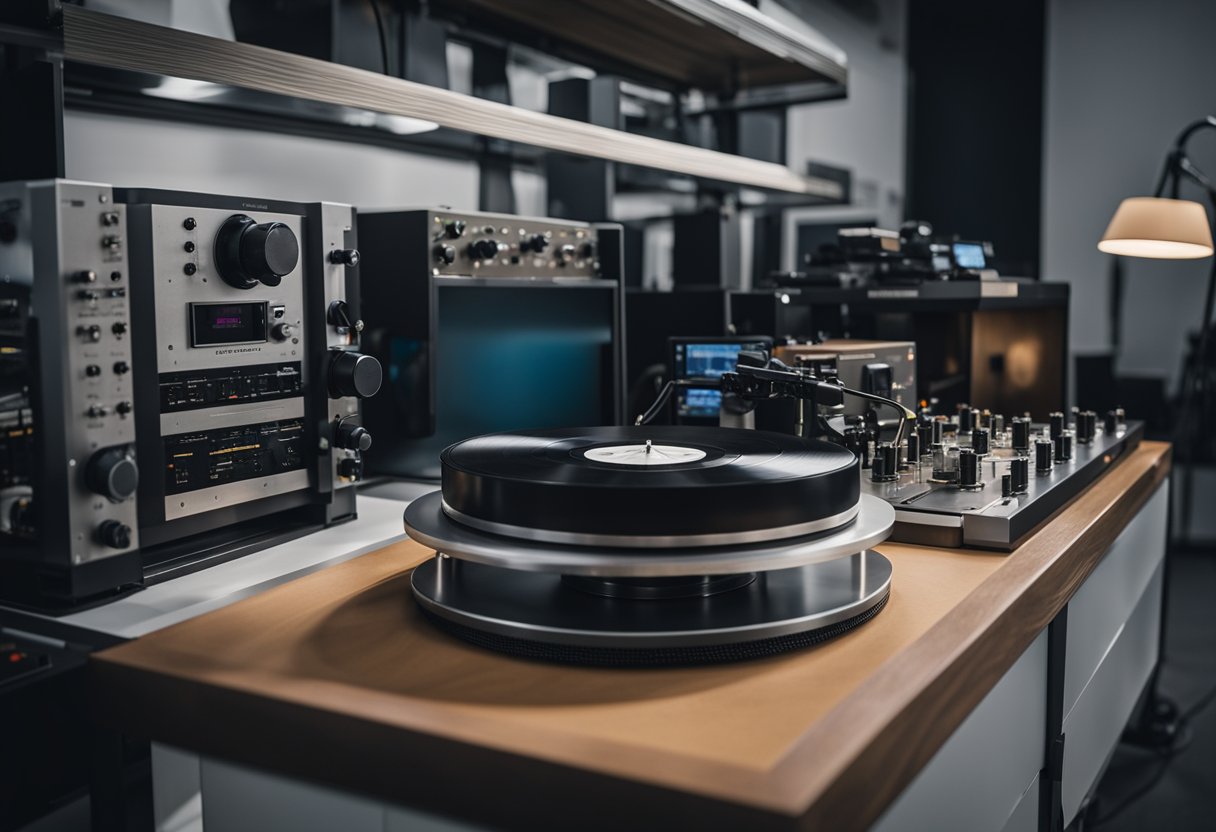
Upgrading your turntable’s plinth can make a significant difference in sound quality. The plinth is the foundation of your turntable and can affect the resonance and vibration of the turntable. Here are some factors to consider when upgrading your plinth.
Material Choices
The material of your plinth can impact the sound quality of your turntable. Some popular materials for plinths include wood, acrylic, and metal. Each material has its own unique properties that can affect the resonance and vibration of the turntable.
Wood plinths are a popular choice for their warm and natural sound. They can also be a great aesthetic addition to your turntable setup. Acrylic plinths are a popular choice for their durability and ability to dampen vibrations. Metal plinths, such as aluminum or steel, can provide a more neutral sound and can also add a modern touch to your setup.
Plinth Isolation
Isolating your plinth from external vibrations can also improve sound quality. One way to do this is by using isolation feet or spikes. Isolation feet can absorb vibrations and prevent them from reaching the turntable. Spikes can also help isolate the turntable from external vibrations by providing a stable base.
Another way to isolate your plinth is by using a separate platform or shelf for your turntable. This can further reduce vibrations and provide a stable base for your turntable. Some turntable platforms even come with built-in isolation features, such as Sorbothane pads or suspension systems.
Motor Upgrades
If you’re looking to upgrade your turntable, one of the most important components to consider is the motor. Upgrading your turntable’s motor can lead to improved sound quality, speed stability, and reduced noise. In this section, we’ll cover some important considerations when it comes to motor upgrades.
Belt Drive vs Direct Drive
One of the first decisions you’ll need to make when upgrading your turntable’s motor is whether to go with a belt drive or direct drive motor. Belt drive motors are generally considered to be more stable and provide better sound quality, but they can require more maintenance. Direct drive motors, on the other hand, require less maintenance, but they can be less stable and provide lower sound quality.
Speed Stability
Another important consideration when upgrading your turntable’s motor is speed stability. A stable motor will ensure that your turntable plays at the correct speed, which is essential for accurate sound reproduction. When upgrading your motor, look for one that provides stable speed and has a low wow and flutter rating. Wow and flutter refer to the small variations in speed that can occur when playing a record, and a low rating means that these variations will be minimized.
Upgrading your turntable’s motor can be a great way to improve sound quality and reduce noise. Just be sure to consider factors like belt drive vs direct drive and speed stability when choosing a motor to ensure that you get the best possible performance from your turntable.
Power Supply Modifications
One of the most popular upgrades for turntables is power supply modifications. Upgrading your turntable’s power supply can have a significant impact on sound quality. A better power supply can provide a more stable and cleaner power source for the turntable’s motor, resulting in less noise and better speed stability.
There are several types of power supply modifications you can make to your turntable. One option is to replace the turntable’s built-in power supply with an external one. This can provide a cleaner and more stable power source, which can result in improved sound quality. Additionally, an external power supply can reduce the amount of electrical noise that is generated by the turntable’s motor.
Another option is to add a battery power supply to your turntable. A battery power supply can provide an even cleaner and more stable power source than an external power supply. This is because batteries are not affected by fluctuations in the electrical grid, which can cause noise in the power supply. Additionally, a battery power supply can help reduce the amount of electrical noise generated by the turntable’s motor.
It is important to note that power supply modifications can be complex and require some technical knowledge. If you are not comfortable making these modifications yourself, it is best to consult with a professional. Additionally, it is important to ensure that any modifications you make are compatible with your turntable and do not void your warranty.
Turntable Isolation and Damping
When it comes to turntable upgrades and modifications, one important aspect to consider is isolation and damping. Isolating your turntable from external vibrations and dampening internal vibrations can significantly improve the sound quality of your turntable. Here are some ways to achieve this:
Isolation Pads
Isolation pads are a popular option for isolating your turntable from external vibrations. These pads are designed to absorb vibrations and prevent feedback and movement from your turntable, even when the volume is at its highest. Isolation pads also help keep your turntable stable if the speakers are causing the needle to jump or vibrate.
Turntable Platforms
Another option for isolating your turntable from external vibrations is a turntable platform. These platforms are designed to sit between your turntable and the surface it sits on, providing a layer of isolation. Some turntable platforms are made of materials like cork or rubber, which can absorb vibrations and prevent them from reaching your turntable.
Vibration Dampening Feet
Vibration dampening feet are another option for reducing internal vibrations in your turntable. These feet are designed to absorb and dissipate vibrations that are generated by the turntable itself. Some turntables come with vibration dampening feet built-in, but you can also purchase them separately to upgrade your existing turntable.
Turntable isolation and damping are important aspects to consider when upgrading and modifying your turntable. By isolating your turntable from external vibrations and dampening internal vibrations, you can significantly improve the sound quality of your turntable.
Choosing the Right Upgrade for You
Upgrading your turntable can be an exciting and rewarding experience, but it’s important to choose the right upgrade for your needs and budget. Here are some factors to consider when selecting an upgrade:
Budget
Before you start upgrading your turntable, it’s important to determine your budget. Upgrades can range from a few dollars to several hundred dollars, so it’s important to know what you can afford.
Cartridge
One of the most important upgrades you can make to your turntable is upgrading the cartridge. A better cartridge can significantly improve the sound quality of your turntable. When selecting a cartridge, consider the type of music you listen to and the tonearm compatibility.
Platter
Upgrading the platter can also improve the sound quality of your turntable. A heavier platter can reduce vibrations and provide better stability. Consider the material of the platter and the compatibility with your turntable.
Tonearm
Upgrading the tonearm can also improve the sound quality of your turntable. A better tonearm can provide better tracking and reduce distortion. Consider the compatibility with your turntable and the type of cartridge you are using.
Preamp
If your turntable does not have a built-in preamp, upgrading to an external preamp can significantly improve the sound quality. Consider the type of preamp and the compatibility with your turntable.
Conclusion
Upgrading your turntable can be a fun and rewarding experience, but it’s important to choose the right upgrade for your needs and budget. Consider your budget, the type of music you listen to, and the compatibility with your turntable when selecting an upgrade.

